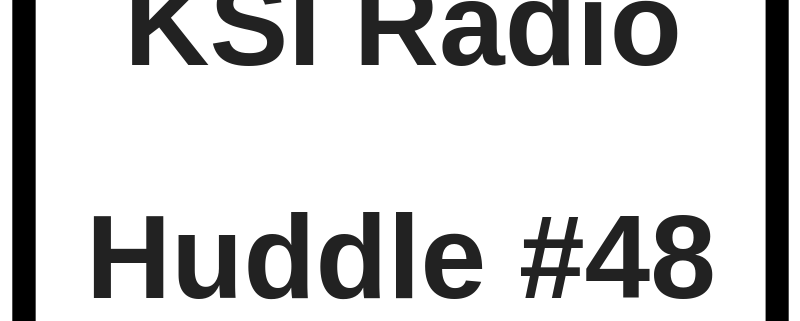Trends in Training
In the early stage of my coaching career I was exposed to the belief that studying, internalizing and implementing the latest trends in training was an optimal path for improving coaching competency. During my first decade of professional development (the 1980s) I embraced this paradigm. However as I entered my second decade (the 1990s) I began to question this approach.
I came to conclude that trends are a reflection of human behavior in a given period of time, rather than an insight into what is optimal. As a result of this I continued to study trends, however ceased internalizing and teaching them.
So why do I continue to study trends? There are a number of benefits of studying trends. Firstly it is an insight into the mindset of the masses, and as a coach of competitive athletes, it helps us to dominate when we are familiar with the mindset of our opponent. Secondly as a coach educator it helps me understand why the masses are influenced to think the way they do. Thirdly, as a student of behavior and one who enjoys the disciplines of sociology and futurism, it’s just interesting! It’s a form of archeology rolled into attempting to predict the next trend! For example, its insightful to watch which of my innovations have been accepted by the masses, which have not, and why. That’s what I do in my spare time.
Understanding where humans have come from helps understand why they do what they are doing, and where they are going.It’s the bigger picture of training.
I realized by the early 1990s that the quickest and easiest way to influence people and position yourself as a ‘teacher’ was to use the words ‘trend’ combined with the word ‘modern’. And if you threw in the word ‘strength’ (and read the article in this series dedicated to ‘strength’) you quickly achieve this goal. And I watched this happen, including the use of some of my works in these very publications. However I withdrew from this ‘trend’. Misleading the masses in this way was not congruent with my values. Would I be more popular and made more money (in the short term) if I stayed with the ‘modern trends’ paradigm. Absolutely. Would you be more popular and potentially make more money (in the short term) if you did too? Probably.
It’s a niche role in our industry for individuals to position themselves as ‘teachers’ by identifying the ‘latest trend’ before it reaches the tipping point, and begin teaching it.
For example, the person who has written the most ‘functional’ training books was using the methods they taught in these books when they got exposed to the ideas that form the basis of so-called ‘functional training’. In fact they were highly critical of them at their first exposure. However they were able to jump on this trend and position themselves as an expert in this. They achieved their goal of being unheard of to becoming ‘significant’.
Now the fact that they have to change their beliefs every time trends change is not a factor that appears to challenge their value system. For example in the early 2000s static stretching was really, really politically incorrect:
…our facilities train more athlete per day than any other that we know…..None of our athletes, from pros down to middle school students,stretch prior to these workouts. Our athletes do not do static stetches…[1]
As the years rolled on there was a small groundswell of return in interest in static stretching. Enough for a trend spotter to fear the tipping point was arriving, and feel the need to jump onboard:
….stretching is highly underrated…… [2] One thing that’s fundamentally different now from when the original ‘Functional Training for Sport’ book [2004] was written is there was no emphasis on tissue quality…tissue work…rolling, stretching. [3]
When they realized their earlier book has no reference to tissue tension manipulation, they salvaged this by including us ‘all’ i.e. we ‘all’ missed it.
I can’t believe there was no reference to static flexibility and no reference to foam rolling just a few years ago. We had no concept of changing tissue density [tension]. [4]
Really? It was a 2004 publication! Anyone who was a competent coach was all over tissue tension by then!
Put simply trend-spotting publications will only teach you what are the acceptable trends of the time, not what is best for you as a coach and your athletes.
So what can or should you be learning to fulfill your potential as a coach? Generalized principles. This is a term and concept I learnt from the highly acclaimed US innovator, the late Richard Buckminster Fuller.[5]
One of the inherent challenges in studying and embracing dominant trends is the human propensity to over-react. Put simply, the longer a value or person has been suppressed the greater the chances that the release will result in a reaction that is in excess of optimal.
To explain this phenomenon I shared this thought over the decades:
The standard reaction to anew idea is over-reaction in the short term, and under-reaction in the longterm.[6]
Futurists describe human response to a new idea as an over-reaction in the short term and an under-reaction in the long term.[7]
Don’t get caught up in trends…In the early stages of any trend there is a tendency to over-reaction the short-term, and under-react in the long term. [8
One of my passions is the study of futurism and human behavior. As such I had developed a saying based upon this study, about how humans reaction to new ideas in the short and long term.[9]
Strength training is a great example of this, as it waited over half a century for acceptance. We are now in that over-reaction to strength training phase, as I explain in a later installment of this article series.
In summary, trends should not be ignored. However on the flip side nor should they be glorified and imitated. When I see a coach or facility reflecting the dominant trend I have empathy for the coach/owner and sympathy for the athlete/client.
It’s challenging to fulfill your potential when decisions are driven by trends.
As a coach or gym owner you may feel good about it because you are ‘like’ everyone else, and we all know that leads to others ‘liking’ us. However from the real world of athlete performance, I’ve not met too many champions who were disappointed when their training was different to the masses.
[1]xxxx., 2004, Reference withheld to protect the message
[2] xxxx, 2010, Reference withheld to protect the message
[3] xxxx., 2010, Reference withheld to protect the message
[4] xxxx, 2010, Reference withheld to protect the message
[5] https://www.bfi.org/about-fuller
[6] King, I.,, 1999, Understanding Plyometrics, (book), Introduction, p. 1
[7] King, I., 2000, Foundations of Physical Preparation (DVD)
[8] King, I., 1999, Get Buffed! (book), p. 77
[9] King, I., 2010, Barbells & Bullshit (book), Chapter 3 – Those sayings look familiar?!, p. 13


